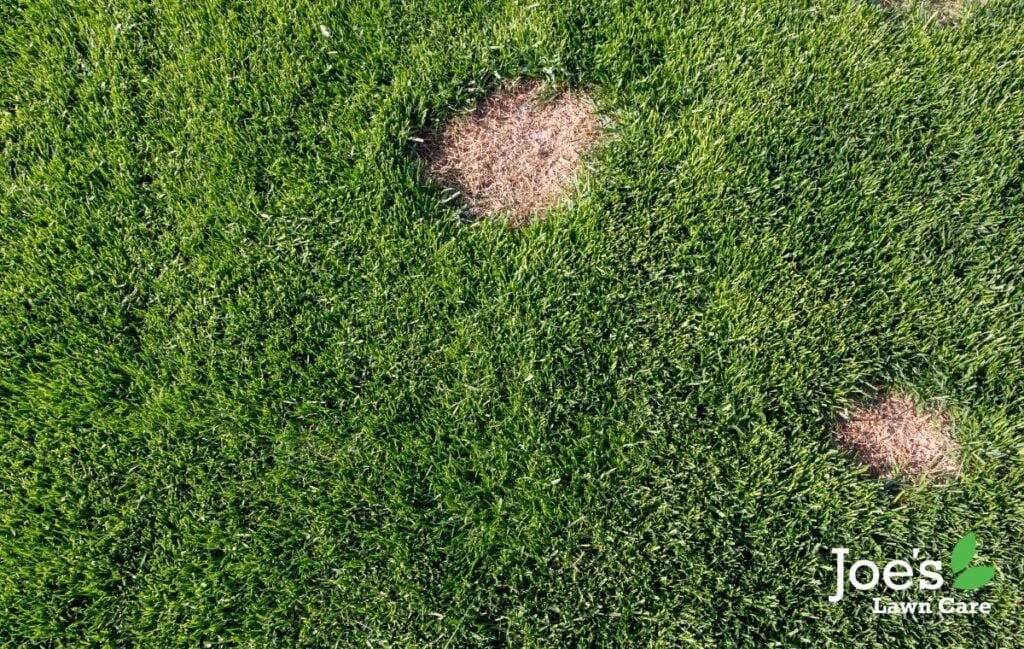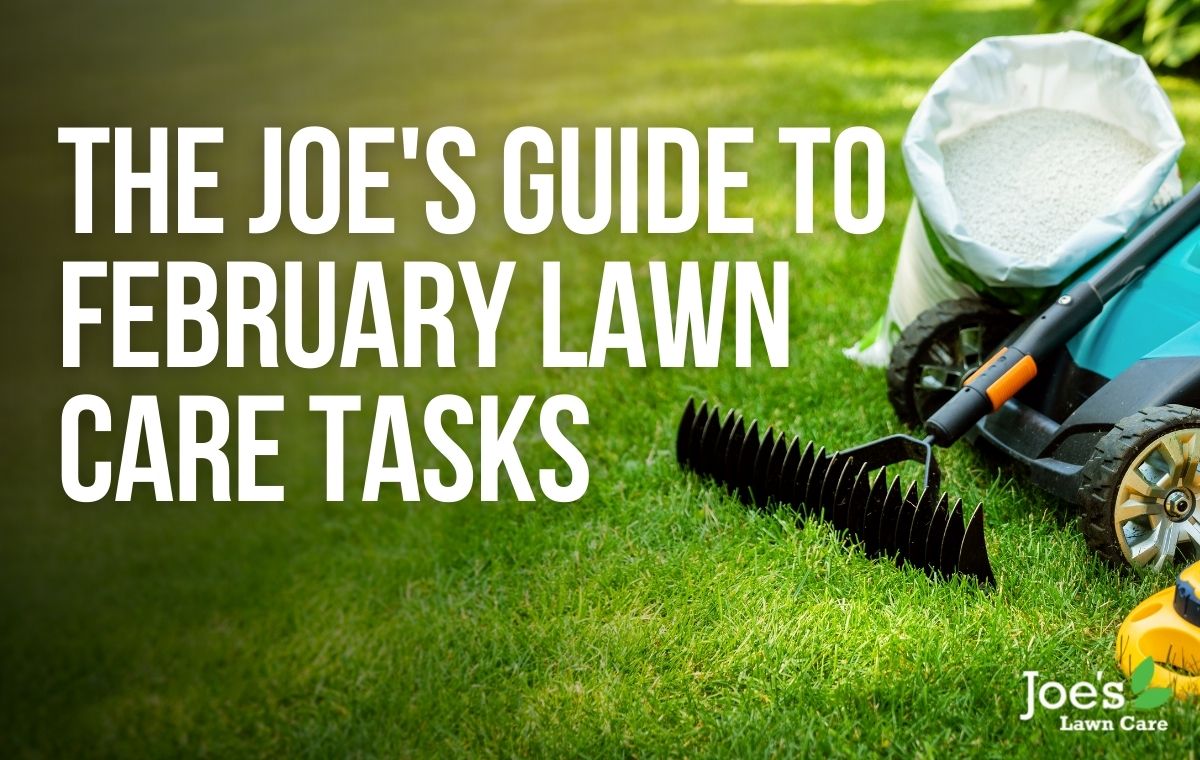The Joe’s Guide To February Lawn Care Tasks
We know what you’re thinking: February is hardly prime time for lawn maintenance, and you’re right. February sits slap-bang in the middle of a lawn’s low season when growth is minimal and the weather is pretty undesirable. But while the list of lawn chore’s is pretty slim, now is the time to pull on your wellies, slide on your gloves and get your lawn ready for an epic spring.
So without further ado, here’s our essential guide to keeping on top of your lawn this February with these helpful maintenance tips:

Task 1: Keep Off Your Lawn
The thing about February is it’s wet and cold and wet, which is the ideal conditions for unwanted soil compaction. So to avoid this lawn care headache, the best thing you can do is keep off your lawn as much as possible, especially when it’s wet and doubly-especially when your grass is frost-frozen (as this can lead to seriously long-term lawn problems, such as disease, urgh).
Task 2: Repair Any Bare Patches
If there’s one thing winter is great at, it’s leaving bald patches all over your lawn, which is why you’ve probably been wondering whether you can start reseeding yet. Well, the answer to your question is: yes. Yes, you can. You just need to understand that while it’s doable, because the weather is still chilly, it’s unlikely your new grass will grow just yet. That’s the bad news. The good news is your seeds will be on standby, waiting until the weather warms up a bit before germinating in early-spring. It’s what we like to call “dormant seeding” and a smart way to use your downtime ahead of the real growth season.
Task 3: Service Your Mower
While it is totally possible to mow your lawn in the winter, it isn’t required because, well, your grass will be growing so incredibly slowly at this time of the year. Instead, now’s the time to head into your shed and give your trusty steed (read: mower) a good ol’ clean and service. Scrub the outside, clear any dried-up debris on underside and then (carefully) give your mower blades a once-over. That should include dealing with any dents, sharpening the blades, tightening any nuts and bolts that have loosened and anything else that will make the first cut of the year feel as buttery as possible.
Task 4: Winter Fertiliser Time
How do we put this? Hmmm. Oh, that’s it: if you’ve not fertilised your lawn since last autumn, then early-february is a great time to give your turf a a winter feed. And then, at the end of the month, get ahead of the game and order up some spring lawn feed. Either way, now is the perfect time to revive your lawn after a bleak winter, kill off any unwanted moss and just improve the overall look, health and colour of your lawn.
Task 5: Aeration Starts Now
While we don’t recommend scarifying your lawn while the winter months are still with us (it’s so much better to wait until your grass is healthy and thriving), it’s a great time to pick up your garden fork and start stabbing your lawn here, there and everywhere. The reason for this is to improve drainage in your lawn, prevent any sodden areas and, above all, reduce that soil compaction that’s so common at this time of the year. What’s more, aeration is the best way to get oxygen and nutrients circulating around the deepest parts of your roots. Just make sure you only perform this task when the ground is dry and frost-free.
Task 6: Brush Away Any Worm Casts
We love earthworms so much at Joes, and for good reason too: not only do worms improve the soil by adding organic nutrients to the ground as they wriggle around, but they are a great sign that your soil is healthy. The headache comes from the worm casts they leave behind as these little suckers can encourage weeds to grow if left to build-up. To prevent this from happening, though, all you need to do is wait for a dry spell, grab your outdoor broom and then brush them into your lawn, which will both stop a build up and spread those healthy nutrients around.
Task 7: Moss is a Massive Problem
With every winter comes a mind-melting amount of moss in your grass. That’s because the cold and damp weather is prime moss spreading time. So make sure you keep an eye on your moss situation and then schedule a treatment for March, along with your spring-time feed. Of course, the best thing you can do to prevent moss from growing in your grass is to grow a healthy lawn. Aside from that, though, you could use sulphate of iron at some point in February and start reducing that excessive amount of moss ahead of spring.
Task 8: Frost is a Factor
Frost might just be one of the biggest lawn killers out there, which is why you need to keep off a frosty lawn at all times. That’s because when a frost rolls in, the freezing temperatures cause the moisture in your grass blades to freeze and expand, drastically weakening your grass. Translation: something as simple as walking across your lawn – or letting your dog out for a run around – will cause this frozen moisture to rupture the cell walls of your grass, not only damaging your lawn but making it a lot more vulnerable to diseases. So, yeah, try and wait until the sun has thawed it before walking across it.
Task 9: Mole Mating Season
If you’ve noticed a lot more mole hills popping up in your garden this month, don’t worry, it’s nothing you’re doing. February is quite simply their mating and fortress-building season – and all you can really do is remove the biggest mole hills, re-firm the ground and then wait until spring to start overseeding the bare patches left behind.
Thanks for reading the no-nonsense Joe’s Guide To February Lawn Care Tasks. For more lawn care tips and tricks, follow us on Facebook and Instagram.





